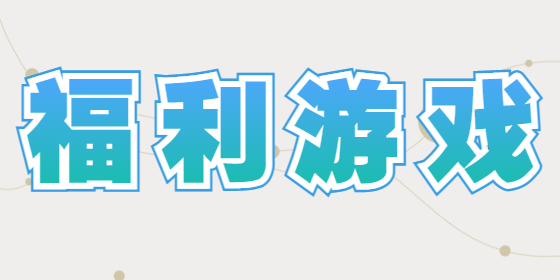WordPress很多插件或者代码都可以实现在编辑文章中自动将外链图片下载到本地,最终我选择了一个叫:Easy Copy Paste的插件。
大家可以自己后台下载下,我这里在提供一个代码版:
更容易使用~
加到当前主题函数模板 functions.php 中:
function ecp_save_post($post_id, $post) {
global $wpdb;
if($post->post_status == ‘publish’) {
$p = ‘/<img.*[\s]src=[\”|\’](.*)[\”|\’].*>/iU’;
$num = preg_match_all($p, $post->post_content, $matches);
if ($num) {
$wp_upload_dir = wp_upload_dir();
set_time_limit(0);
$ch = curl_init();
curl_setopt($ch, CURLOPT_HEADER, false);
curl_setopt($ch, CURLOPT_RETURNTRANSFER, true);
curl_setopt($ch, CURLOPT_SSL_VERIFYPEER, false);
curl_setopt($ch, CURLOPT_FOLLOWLOCATION, true);
curl_setopt($ch, CURLOPT_MAXREDIRS,20);
curl_setopt($ch, CURLOPT_CONNECTTIMEOUT, 30);
$ecp_options = $_SERVER[‘HTTP_HOST’];
foreach ($matches[1] as $src) {
if (isset($src) && strpos($src, $ecp_options) === false) {
$file_info = wp_check_filetype(basename($src), null);
if ($file_info[‘ext’] == false) {
date_default_timezone_set(‘PRC’);
$file_name = date(‘YmdHis-‘).dechex(mt_rand(100000, 999999)).’.tmp’;
} else {
$file_name = dechex(mt_rand(100000, 999999)) . ‘-‘ . basename($src);
}
curl_setopt($ch, CURLOPT_URL, $src);
$file_path = $wp_upload_dir[‘path’] . ‘/’ . $file_name;
$img = fopen($file_path, ‘wb’);
curl_setopt($ch, CURLOPT_FILE, $img);
$img_data = curl_exec($ch);
fclose($img);
if (file_exists($file_path) && filesize($file_path) > 0) {
$t = curl_getinfo($ch, CURLINFO_CONTENT_TYPE);
$arr = explode(‘/’, $t);
if (pathinfo($file_path, PATHINFO_EXTENSION) == ‘tmp’) {
$file_path = ecp_handle_ext($file_path, $arr[1], $wp_upload_dir[‘path’], $file_name, ‘tmp’);
} elseif (pathinfo($file_path, PATHINFO_EXTENSION) == ‘webp’) {
$file_path = ecp_handle_ext($file_path, $arr[1], $wp_upload_dir[‘path’], $file_name, ‘webp’);
}
$post->post_content = str_replace($src, $wp_upload_dir[‘url’] . ‘/’ . basename($file_path), $post->post_content);
$attachment = ecp_get_attachment_post(basename($file_path), $wp_upload_dir[‘url’] . ‘/’ . basename($file_path));
$attach_id = wp_insert_attachment($attachment, ltrim($wp_upload_dir[‘subdir’] . ‘/’ . basename($file_path), ‘/’), 0);
$attach_data = wp_generate_attachment_metadata($attach_id, $file_path);
$ss = wp_update_attachment_metadata($attach_id, $attach_data);
}
}
}
curl_close($ch);
$wpdb->update( $wpdb->posts, array(‘post_content’ => $post->post_content), array(‘ID’ => $post->ID));
}
}
}
function ecp_handle_ext($file, $type, $file_dir, $file_name, $ext) {
switch ($ext) {
case ‘tmp’:
if (rename($file, str_replace(‘tmp’, $type, $file))) {
if (‘webp’ == $type) {
return ecp_image_convert(‘webp’, ‘jpeg’, $file_dir . ‘/’ . str_replace(‘tmp’, $type, $file_name));
}
return $file_dir . ‘/’ . str_replace(‘tmp’, $type, $file_name);
}
case ‘webp’:
if (‘webp’ == $type) {
return ecp_image_convert(‘webp’, ‘jpeg’, $file);
} else {
if (rename($file, str_replace(‘webp’, $type, $file))) {
return $file_dir . ‘/’ . str_replace(‘webp’, $type, $file_name);
}
}
default:
return $file;
}
}
function ecp_image_convert($from=’webp’, $to=’jpeg’, $image) {
$im = imagecreatefromwebp($image);
if (imagejpeg($im, str_replace(‘webp’, ‘jpeg’, $image), 100)) {
try {
unlink($image);
} catch (Exception $e) {
$error_msg = sprintf(‘Error removing local file %s: %s’, $image,
$e->getMessage());
error_log($error_msg);
}
}
imagedestroy($im);
return str_replace(‘webp’, ‘jpeg’, $image);
}
function ecp_get_attachment_post($filename, $url) {
$file_info = wp_check_filetype($filename, null);
return array(
‘guid’ => $url,
‘post_type’ => ‘attachement’,
‘post_mime_type’ => $file_info[‘type’],
‘post_title’ => preg_replace(‘/\.[^.]+$/’, ”, $filename),
‘post_content’ => ”,
‘post_status’ => ‘inherit’
);
}
add_action(‘save_post’, ‘ecp_save_post’, 120, 2);
单篇操作
之后,编辑文章只需要点击更新按钮,就可以将文章中的外链图片下载到本地并替换链接。
不过逐个编辑文章不仅繁琐而且工作量不小,这里教大家一个小技巧,可以批量下载文章中的外链图片。
批量操作
该插件的代码不仅可以在正常的编辑页面点击更新按钮触发下载功能,而且可以在后台所有文章列表页面中触发下载图片功能,原理明白了,操作就简单了。
进入WP后台,文章→所有文章,进入文章管理页面,勾选“标题”全选当前页面的所有文章,并选择“编辑”,并点击“应用”按钮。
切记,不要更改批量编辑中的任何设置,只需单击 “更新”即可。
这个过程将触发检查所有选定的文章,并自动下载外链图片!










请登录之后再进行评论